Polar Dates August 7, 2008 – August 25, 2008
Reflections on Toolik Lake
It’s been a busy time since my return to Michigan and a time of many adjustments. The less obvious interior adjustments such as thought, feeling and reflection of the experience itself linger and surpass the obvious adjustments such as creature comforts, sundown, and differences in climate and surroundings.
The evening before I left Toolik, I stayed up all night to witness that which is completely foreign to the vast majority of the human population – a sunset and sunrise that are so near to one another that the sky is never completely dark. Keep in mind that when I arrived at Toolik Lake on June 27, there was no sunset, no sunrise, no dusk, no dawn.
After a month, the sun began to set, although there was still 24 hours of daylight. Dusk began around 11:00 p.m. creating long shadows and a deep, deep blue sky. By 1:00 a.m. the sky was turning brilliant colors of pink, purple and orange and the sun was very low.
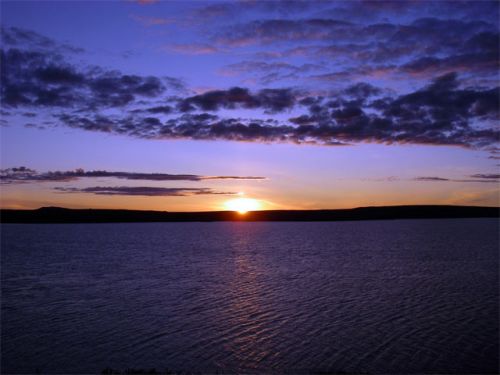
Around 1:45 the sun dipped below the horizon, and a quarter moon rose.

The sky was as dark as I had seen it in the time I had been in the Arctic - about as dark as a movie theater is when people are coming in, before the previews start, before the lights are turned all the way down. It was still light enough to read while outside, but inside the labs, lights were necessary. Around 2:30 a.m. the sun’s light was again visible across the lake and the Earth shadow was brilliant across the Brooks Range.

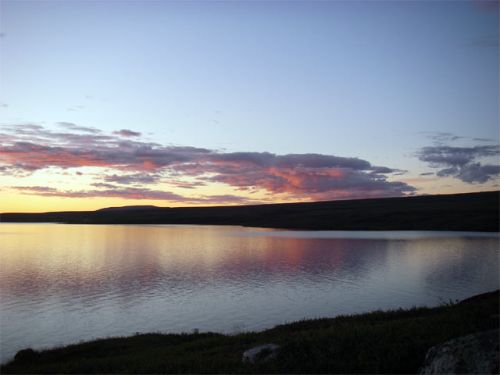
By 3:00 a.m. , the sun was fully above the horizon, and the sky was streaked with bands of light blue, and pearly pink.

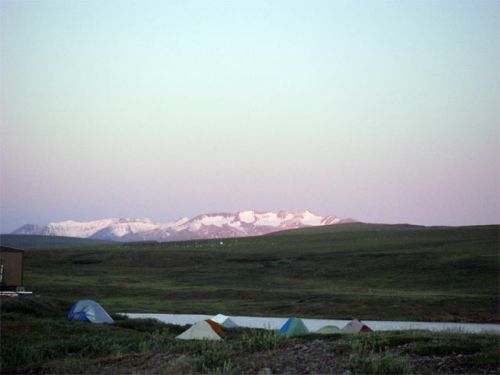
Of course, by now it was too late to go to bed and I was already packed to leave since the Toolik express van would be pulling out at 6:00 a.m. I went to the dining hall for my last meal and multiple cups of coffee. Other people who were taking the Toolik van to Fairbanks began to arrive, including some of the kitchen crew and a group of bird researchers who had only been at the field camp for 2 days. There were 10 of us in a 9 person van with all the luggage, computers and assorted stuff people carry. I couldn’t help but think that I had been there for over 30 days and had less than the bird people; although to be fair, they were doing a transect along the Dalton Highway then south to the Kenai Peninsula and had to take all their gear everywhere they went.
The trip was smooth and fast, we were back in Fairbanks at 4:00 p.m. I went straight to the airport to try to get my flight moved up and believe it or not, was successful! I left FAI that night, at 9:30 p.m. Alaska time, flew through Minneapolis and arrived in Detroit the next morning. I had been traveling for 28 hours straight, but wow! I was so happy to be home. My husband met me at the airport with my dog Pi, I can’t describe how joyful was the reunion.
I began this journal talking about the adjustments – the physical, mental and emotional. It’s far easier to describe physical differences, some of which are listed in the following comparison list.
Webster Twp, Michigan (home Toolik Lake, Alaska (field camp) Flush toilets Outhouses on stilts House Tent Shower every day Shower 1/week – 4 minues total Family & Friends No family, but friends :) Pets Ground squirrels Trees TundraA treeless area between the icecap and the tree line of arctic regions, having a permanently frozen subsoil and supporting low-growing vegetation such as lichens, mosses, and stunted shrubs. Meadows TundraA treeless area between the icecap and the tree line of arctic regions, having a permanently frozen subsoil and supporting low-growing vegetation such as lichens, mosses, and stunted shrubs. Lake Lake Creek Inlet Car to go wherever Giant truck to go to more tundra Mall and downtown shopping Nowhere to spend money Sandals and bare feet Rubber boots, 3 pairs of socks, blisters Tank tops and suntans Fleece jacket and pastiness Diverse population White people and a few Asian people Cook your own food All meals prepared for you Dark at night, easy to sleep Light all the time, can’t get tired Wireless internet 24/7 Internet goes down at night. TV with 200+ channels Youtube
Mental adjustments are the second easiest ones to describe. Toolik Lake is a work place first and foremost. The research has to get done in a very compacted timeframe, which means long hours and little time for relaxing and playing. Coming together for meals is the main time for socializing. Although there are small groups of people who may play cards at night and an occasional salsa dance lesson with music, most of the time is spent working. Twenty-four hours of sunlight meant not having a clear break from one day to the next, causing me to lose track of the days; keeping a journal was the way I marked the time.
It was also mentally challenging reading research papers, gathering background information for the journal articles and discussing Arctic research with the people there. Like most professions, there are a lot of buzzwords and acronyms used for processes, equipment, and places. There are also a lot of people coming and going from many different places, and they often had different buzzwords and acronyms, different equipment and different research. Then of course, there was the volume of work I had to do in my limited time in the field. PolarTrec pictures and journals are time-consuming and require a lot of detail and forethought, editing and polishing.
I was also engaged with creating lessons and activities for my classes in the fall. I wrote in an earlier journal about having my students construct snow fences for snow/vegetation studies along the same lines as Dr. Bret-Harte. I was also writing a series of lessons and activities for students to create study plots along the same lines as Dr. Moore and Dr. Gough. When developing lessons and activities for students, it’s necessary to translate the science so it’s understandable and meaningful for the students’ age group and educational background. It’s also necessary to find ways to have students running experiments that can have verifiable results, in other words, to do real science and not just running demonstrations or performing activities for the sake of the activities themselves. This is very difficult to do when the science is done as it is at Toolik Lake, using very sophisticated technology to measure results from very large sample bases that have been running for many, many years. Upon my return home, I have taken a lot of the remaining summer to finish the work so the students can begin the study plots in September and run the snow fence experiment beginning in November. The work is complete, with the exception of getting the materials ordered, so Scarlett students will be doing Polar science in Michigan!
Emotionally, I’m still dealing with the adjustment. I’m going to be very honest about this aspect of the PolarTrec experience. People ask me, "How was it? What did you think? Would you do it again?” I ‘ll try to answer those questions.
The first question, "How was it?” Well, it was hard. It was very difficult being away from my family for over a month. It was difficult going somewhere where I didn’t know anyone. The people I worked with were great – they were generous, helpful and flexible. We got along very well and had a good time, as can be seen by looking at the photo gallery. But still it is hard to be that far away from home for such a long time.
The next question, "What did you think?” is both easier and less easy to answer. The easy part is talking about the location - I think it’s an amazing place! I have been somewhere that few people have ever been to or will ever go to. I saw the most beautiful scenery I have ever seen in my life. The grandeur of the high Arctic cannot be described, and was infused in me. I compare what I see around me now to what I experienced there. I came away from Toolik Lake, the Brooks Range, the Arctic National Wildlife Refuge with a renewed sense of what God has provided for us to safeguard and protect.
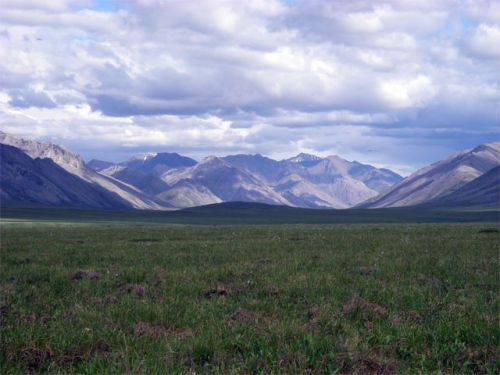
The difficult part of the question to answer is what do I think about what I experienced from a scientific standpoint. There are so many scientists working on global climate change while the change is happening very quickly, it’s a race that may not be decided. The variables are many, controlling the variables is difficult, collecting data is daunting, analyzing the data is time-consuming and leads to more questions. It’s science and science is not neat and tidy and easily summed up, it’s life in all its complexities.
It’s an amazing undertaking, one that includes scientists from around the world setting up simultaneous circumpolar experiments. Technology and engineering are impressive, there are machines and methods to measure everything from the amount of carbon taken up into plant tissue to the amount of carbon formed millions of years ago and contained in permafrost. Helicopter trips to otherwise unreachable areas of the tundra are taken as casually as a weekend vacation trip, in fact there were so many people needing to access remote areas that a second helicopter was brought to Toolik the week that I departed. I’m quite sure the majority of the population don’t realize the extent of technology used in field research, it’s impressive!
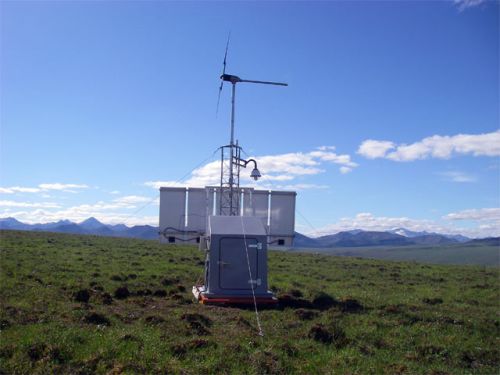
Lastly, the question, "Would you do it again?” is the easiest question to answer. Absolutely I would, but a month is a long time! I realize that for the scientists working at Toolik, being there is a passion. Although many scientists go to the field for a much briefer period of time than I did, sometimes for only a week or a few days - when they are there, they are completely in their element. It’s the same as me being in a school environment - it is comfortable and fun – it’s my element – I can’t imagine doing anything else or being in any other career or not working with students. As a biologist, I have my own interests in research and am passionate about bringing valid science into the classroom and having students get excited about doing science. That’s why I wanted to be a PolarTrec teacher, and that’s what I take with me from Toolik .
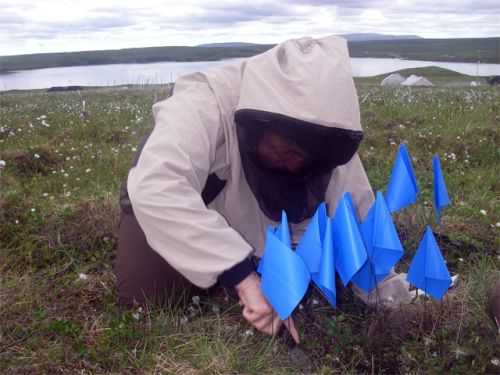
I also have the researchers I worked with, we will continue our association and will be working together with my students. Both Donie and Laura are hoping to come to Michigan to help the project get started and John is going to be meeing my classes via video conferencing. This reflection would not be complete without thanking them and all the people at ARCUS that worked so hard to make the experience a success.
Donie Bret-Harte
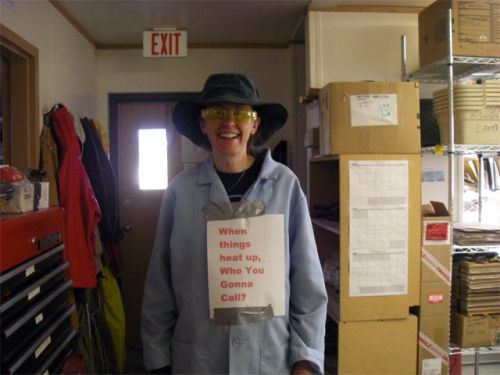
Laura Gough:

John Moore (back) with Karl
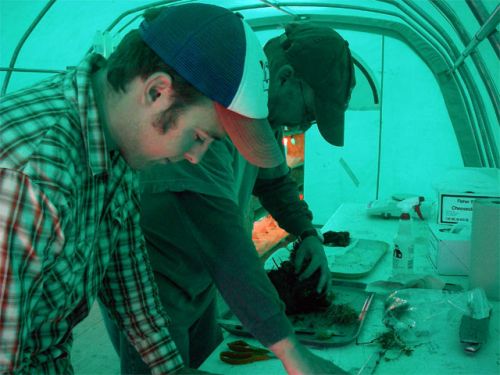
Matt & Elise
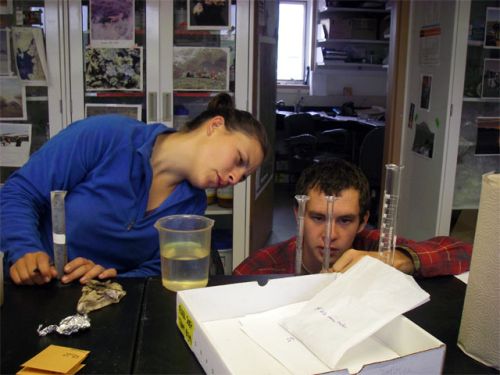
Yi Wei
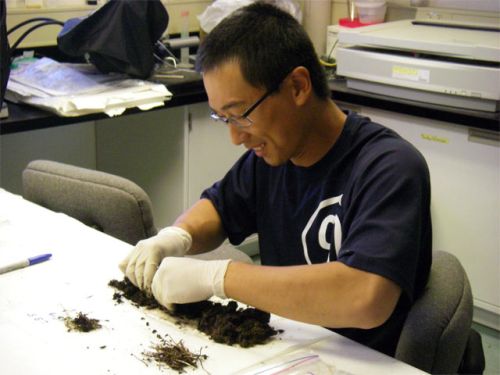
Donna and Carol
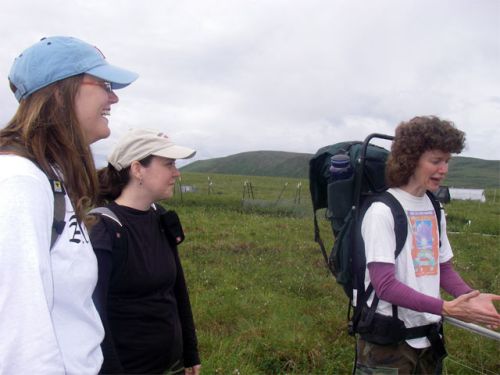
Mary, a teacher from Colorado
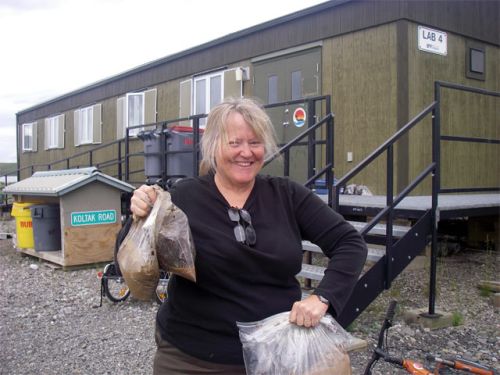
Lab 2 women (and 1 man)
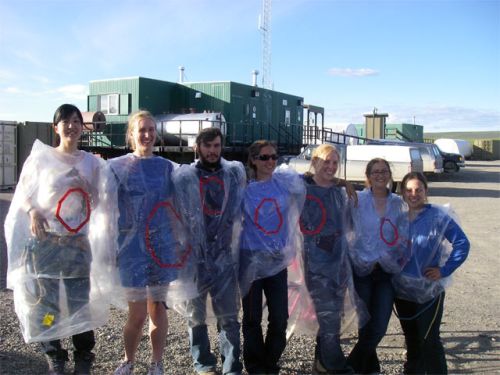
Lab 2 crew
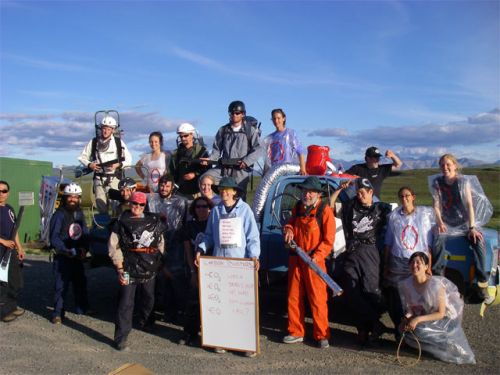
The PolarTrec program afforded me an experience that has had a stong impact on my life and how I look at the world. The research being done at Toolik Lake and all the polar research stations is necessary. While the remote locations and harsh climate make it challenging work, technology makes the work possible. I hope to have my students and the community understand all these aspects of polar science!
It’s now 1 week and 1 day until students arrive back from their summer vacation. It’s going to be an amazing year and a challenging year for my students – they will be doing authentic field-work, the same type of work done at Toolik Lake and other Arctic research stations. Michigan may not have permafrost, but it has plenty of snow. It may not have tundra, but it has plenty of meadow, shrubs and wetlands. It may not have ground squirrels and caribou, but it has plenty of fox squirrels and deer. I will be resuming my journal and will be including pictures and journal entries from my eighth grade students as they begin their own PolarTrec experience.
Signing off for now from Whitmore Lake and remember, "There are no passengers on Spaceship Earth. We are all crew”. ~Marshall McLuhan, 1964
- < prev
- 38 of 38


Comments